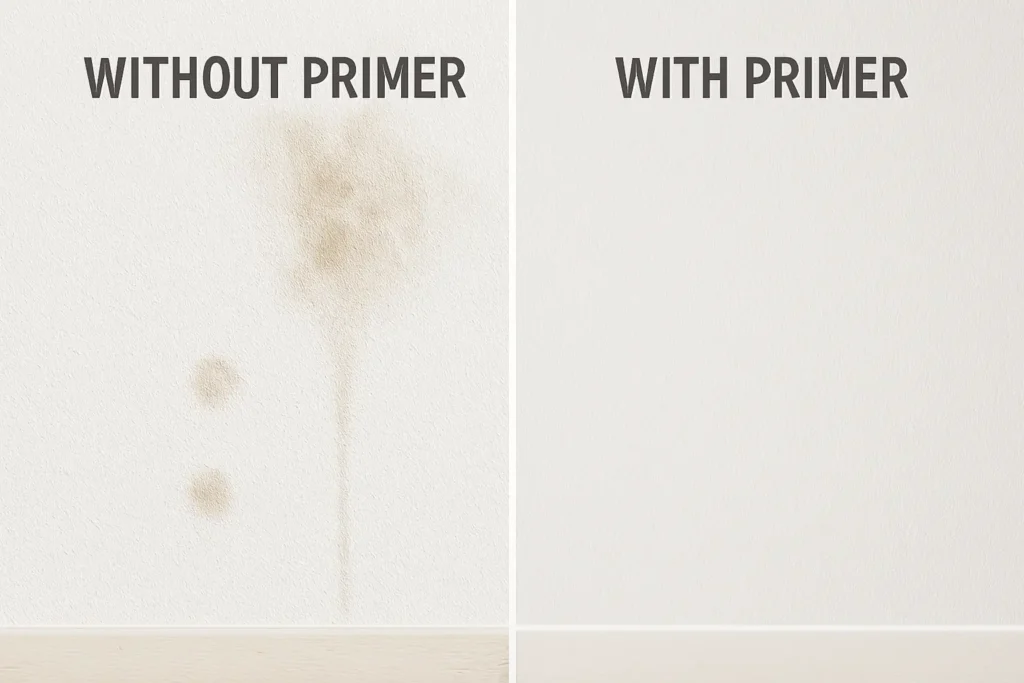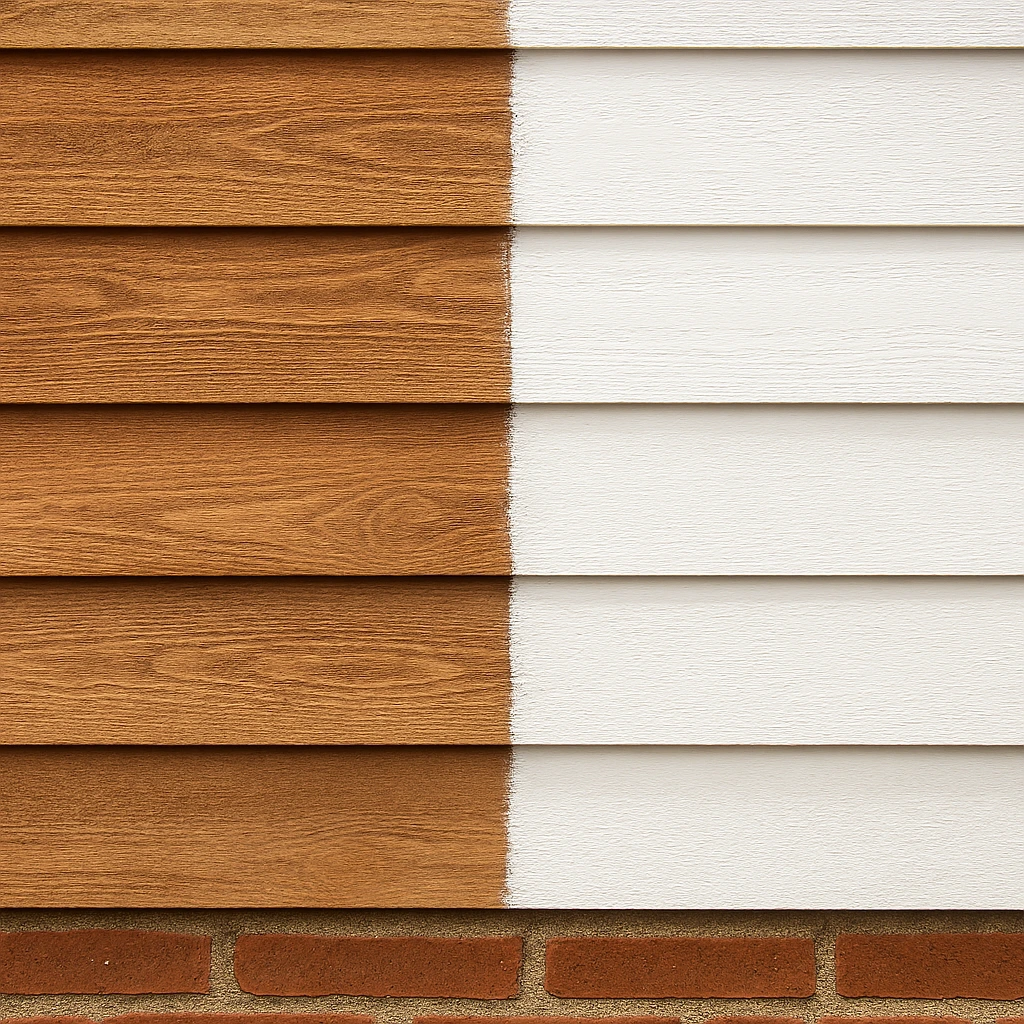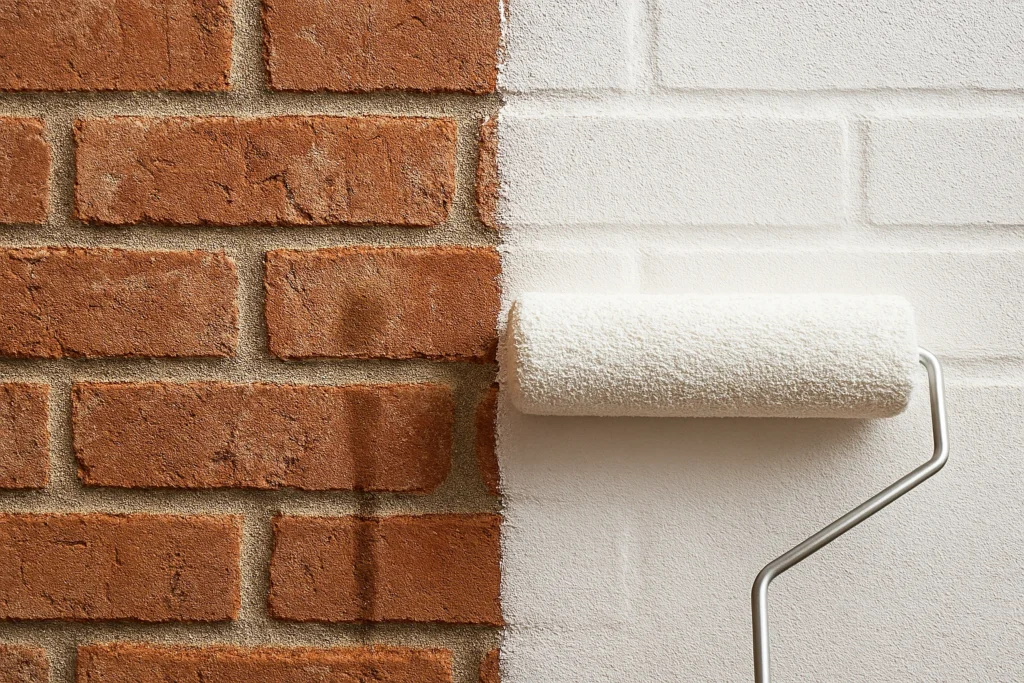Priming is the foundation of a flawless paint job. Whether you’re painting walls, ceilings, metal, or brick, understanding how to use primer to tackle the toughest problems will make the difference between a professional finish and a project that peels within weeks.
In this guide, we’ll cover everything you need to know, from choosing the best primer for home use to applying primer on surfaces like concrete, wood, and brick. You’ll also see before and after results that prove just how important primer really is.
Why Primer Matters Before Painting
Before diving into the different types, let’s quickly break down why primer is so essential. It seals porous surfaces so paint goes on evenly, blocks stains that might bleed through, improves adhesion on slick areas, and increases durability by reducing peeling and cracking.

If you skip this step, even the best paint can fail. That’s why professionals always emphasize how to use primer before painting as a non-negotiable step in prep work. For example, a simple task like cleaning walls before painting can dramatically improve the performance of your primer.
Choosing the Best Primer for Home Use
When looking for the best primer for home use, consider the surface and location. For drywall, a high-hiding drywall primer will conceal imperfections, while in bathrooms you’ll want a moisture-resistant primer similar to those recommended in our guide on the best paint for bathroom ceiling to prevent mold. In kitchens, a stain-blocking primer is essential to resist grease and smoke.
If you’re unsure, a versatile latex primer works well for most interior surfaces and makes a safe all-around choice.
How to Use Primer Before Painting
The process of priming is straightforward but requires attention to detail. First, prep the surface by removing dirt, dust, or grease, and lightly sanding glossy areas. Next, apply the primer with a roller or sprayer, if you’re dealing with textured surfaces, you might benefit from tools like the best paint sprayer for popcorn ceiling. After drying for 2–4 hours, lightly sand between coats for a smooth finish, and finally, apply your topcoat.
This method is one of the best ways to paint a ceiling or any other surface for long-lasting results.
How to Use Exterior Primer
Exterior surfaces face harsh conditions such as rain, heat, and UV rays, which makes exterior primer critical. On brick or concrete, use a masonry bonding primer, while wood siding requires an oil-based or stain-blocking formula. For metal, corrosion-resistant primers are best.

If you’re preparing masonry indoors, such as garages, pairing primer with durable coatings like the best paint for garage walls can ensure lasting protection.
Best Primer for Metal
Painting metal can be tricky because paint doesn’t adhere easily. The best primer for metal often depends on the surface—rust-inhibiting primers work best for steel or iron, while etching primers are recommended for aluminum. These options not only improve adhesion but also prevent rust from creeping under the paint layer.
Curious about other surfaces? Our guide on painting stainless steel explains how primer plays a role even on smooth metals.
Best Primer for Concrete
Concrete is highly porous, meaning it will soak up paint unevenly without a primer. The best primer for concrete is a masonry bonding primer that ensures the paint adheres properly and resists peeling or flaking.
For outdoor concrete projects, combining a bonding primer with specialty coatings like energy-saving paint can improve both performance and efficiency.
Best Primer for Woodworking
Wood requires special attention before painting. The best primer for woodworking should seal tannins that bleed through, provide a smooth base for topcoats, and be compatible with specialty finishes like chalk paint.
For more detailed advice on finishing wood, check out our guide on what paint to use on wood.
Primer Paint Before and After Results
Still wondering if primer makes a difference? Comparing primer paint before and after shows clear results. Surfaces look smoother and more uniform, fewer coats of paint are required, and colors appear brighter and last longer.
Skipping primer often leads to stains bleeding through, uneven colors, and premature peeling. As highlighted in our guide on the benefits of painting your home, proper priming ensures a finish that truly enhances your space.
Best Primer for Brick
Brick is one of the toughest surfaces to paint because it absorbs moisture and often shows efflorescence. The best primer for brick is a masonry sealer and primer combination. This creates a barrier that blocks moisture, prevents stains, and allows paint to adhere properly.

If you’re updating old brick walls indoors, be sure to clean them thoroughly. Sometimes, using methods like removing paint with steam can prepare the surface better before applying primer.
Final Thoughts
Learning how to use primer to tackle the toughest problems is the foundation of a long-lasting paint job. Whether you’re working with metal, brick, concrete, or wood, the right primer ensures smoother results, fewer coats of paint, and a professional finish that stands the test of time.
If you’re starting your next project, remember: prep with primer, then paint with confidence. For drywall in particular, using the best drywall primer can save you time and effort while delivering flawless results.

Leave a Reply